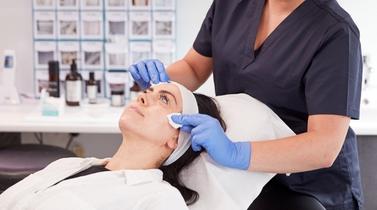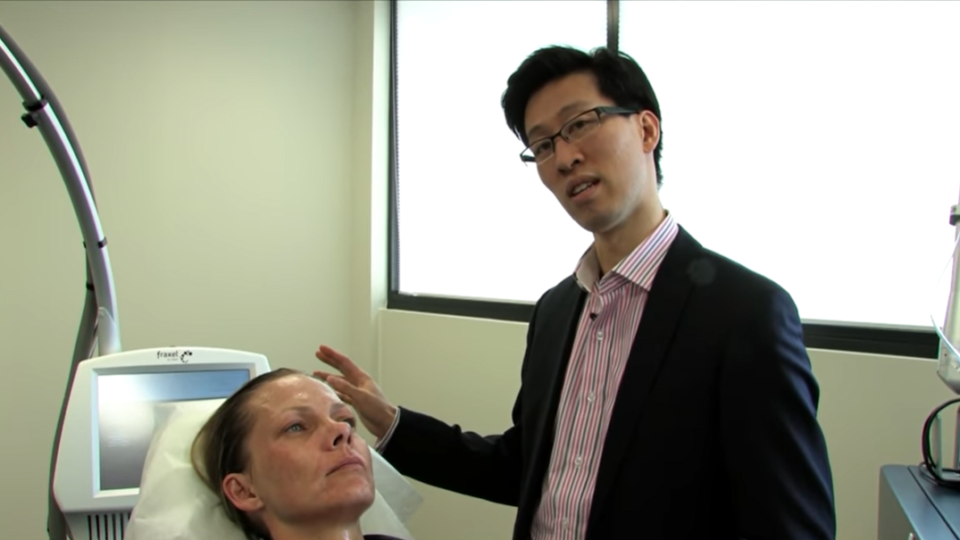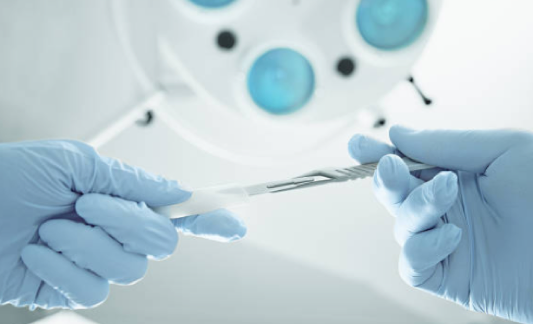How to prepare for a chemical peel
A chemical peel is a convenient means of refreshing the face, with the skin looking smoother and clearer once the course of peels has had time to take effect.
Regenerating new epidermal cells may seem like a complex process at first glance. However, preparing for a chemical peel treatment is a simple process, mainly requiring taking care of yourself and your skin. We will walk you through the exact steps you will need to take before and after the chemical peel procedure. This will allow you to be completely prepared for your treatment.
What is a chemical peel?
A chemical peel is a resurfacing technique used to dissolve the top layers of the skin to let new growth show through. This treatment may soften the appearance of fine lines and wrinkles, unwanted pigmentation, scars and sun damage.
Peels are made at different concentrations depending on how deep you wish to penetrate the skin for renewal. However, low concentration and higher frequency is often relied upon to prevent any damage from occurring to the epidermis. These peels are made from ingredients that work well to peel the skin without causing further damage. This may include fruit enzymes, salicylic acid, lactic acid, glycolic acid, retinoic acid, and other chemical solutions being some of the most common peel ingredients.
Your Nurse or Skin Therapist will help you pick out the best chemical peel for your skin type, and will walk you through treatment preparation in your consultation.
How to prepare for a chemical peel
No matter what chemical peel you choose, preparation is highly necessary in order to get you ready for the skin resurfacing procedure. There may be certain products or habits you will need to steer clear of before beginning the skin peeling process. It is highly advised that you follow your practitioner’s pre and post-procedure instructions to get the most out of your treatment.
Choose the right chemical peel
There are many different chemical peels and it is vital to your skin’s health that you choose the best option for it. This requires more than determining what skin type you have and how deeply you wish the chemical peel to penetrate. You will also need to factor in your age, your skin’s current condition, and even its colour as some peels work better on different skin tones than others.
The consultation will walk you through this determining process, providing visual assessment, a Visia skin scan and asking questions about your skin to guarantee the best form of action going ahead into the procedure.
Avoid abrasive exfoliation and scrubs
Leading up to the chemical peel procedure, you will need to avoid using exfoliants and facial scrubs for up to two weeks, unless otherwise recommended by your practitioner. This is because any product with a physical exfoliating effect often causes micro-tears and damage to the skin, which can be exacerbated further by chemical peels, which are exfoliation tools of their own.
Keep an eye out for any products that you use in your daily life that claim to work as an exfoliant, and make sure to use only products recommended by your practitioner before your appointment.
Let the practitioner know if you are taking medications
Some medications can impact how well your skin tolerates the peeling effect of a chemical peel procedure. It is important to let your practitioner know ahead of time about your medical history and what kind of medications you are taking. This will allow them to point out any that may interfere with the treatment plan.
Certain types of anti-ageing, acne, or antiviral medication can affect the process of chemical peels, but even over-the-counter topical products that include ingredients like retinol or benzoyl peroxide should be disclosed. Your practitioner can inform you on what products you will need to stop using prior to the appointment.
Hydrate the skin
It may seem simple, but just working to stay hydrated leading up to your appointment can help with how your chemical peel treatment turns out. This is because dry skin is often less tolerable of the peeling process and can easily be damaged. So drink plenty of water and avoid products that dry out your skin to help you prepare for a chemical peel.
Use sunscreen daily
Daily application of sunscreen, especially those that are broad-spectrum can help protect your skin and prevent it from forming irregular pigmentation patterns on the treatment area. Your skin’s health is vital to getting the most out of your treatment, so be sure to avoid unprotected sun exposure and use all forms of sun protection to keep your skin safe and damage-free.
Check your schedule for important events
With some peel types you do not notice any visually obvious peeling of the skin. Most types of chemical peels however do require some downtime afterwards for the peel to progress and recovery to begin. Therefore, you should not schedule an appointment in the upcoming weeks following treatment, even if it is not a deep peel. Skin health may be very fragile during the recovery time.
Give yourself enough time and space to recover before heading out to the next big party or family gathering. Your practitioner will be able to advise you how much downtime you are likely to have, based on your skin type and peel chosen.
How to protect your skin after a chemical peel
Regardless of whether you have chosen to go for a light peel or one of the deeper peels, your recovery time should be spent focusing on protecting the new skin that is emerging. You can do so by:
- Not using makeup on your face for a few days
- Using ice packs to deal with irritation and swelling
- Taking over-the-counter pain-relieving medication when needed
- Only using gentle skincare products on the treated area that has been recommended by your practitioner
- Using only cool or cold water on your face, not hot
- Minimising excessive sun exposure and using sun protection like sunscreen
- Not picking at or attempting to peel the skin off yourself
More sensitive skin types may find the chemical solution of peels particularly irritating, but either way, be sure to be gentle on your skin and avoid any further cosmetic treatments for a while.
How do you get the best results from a chemical peel?
To get the best results from your chemical peel, there are some steps you can take before and after the procedure to protect your skin and encourage the new growth of skin cells. These steps include:
- Touching your face with only clean hands, and avoiding the urge to rub, pick or scratch at any peeling skin
- Do not use irritants on your skin, which include ingredients like retinoids, BHAs, AHAs, benzoyl peroxide, and other products your practitioner recommends you avoid
- Schedule more than one treatment to build upon your original results
- Use only products that have been approved by your treating Nurse or Skin Therapist and focus on post-treatment recovery
- Apply sunscreen daily and avoid unprotected sun exposure
You will be walked through the entirety of your pre and post-procedure tips during your consultation. Following this professional advice will increase the likelihood of a favourable treatment outcome..
Additionally, other skin treatments like bio-remodelling or bio-stimulators after the initial healing period has finished, will complement and may enhance the results from your chemical peels as they both assist with collagen production. Your practitioner can advise you on which options will work best for your skin type and to aid your initial treatment of a chemical peel.
Where to get a chemical peel in Melbourne?
Our team of Nurses and Skin Therapists have many years of experience in providing chemical peels in Melbourne.
If you are ready to take the step for your skin, then give us a call at 1300 863 824, or book online to set up your first consultation.


